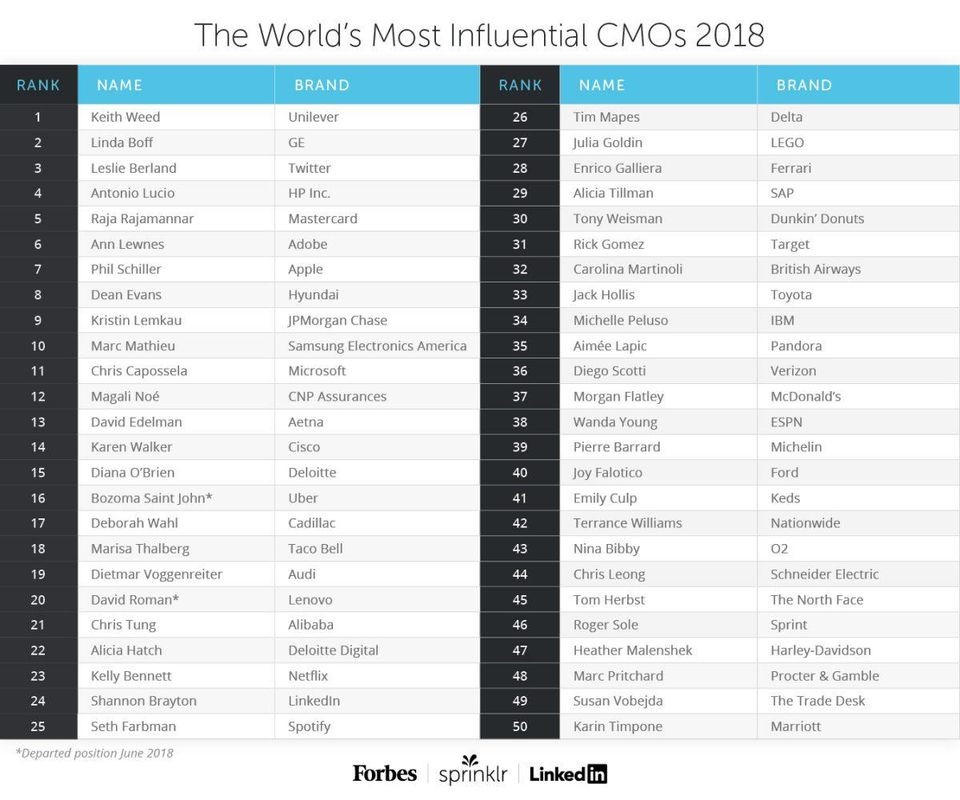In the XXIth century, Chief Marketing Officer (CMO) has become one of the most important and influential person in a company. It is exactly CMO who helps company to determine user attitude, opinion and preferences as well as to develop the right strategy for communication and sales. At the same time, CMO' role and scope has been expanded nowadays - they no longer act exclusively as heads of advertising campaigns, but also assist overall development of a company and market by implementing innovations. It is worth noting, that due to the existing demand and challenges on the market, the list of practical skills, competence and experience that are crucial for success has been increased.
The well-known business magazine Forbes has released its 2019 list of The World’s Most Influential CMOs, who have best understanding of costumer needs and respectively, create value for them. CMOs were evaluated according to specific indicators such as social media engagement (Twitter, Linkedin) brand awareness and brand loyalty index. The Top 10 Most Influential CMOs represent very successful brands: Linda Boff (GE), Leslie Berland (Twitter), Antonio Lucio (HP), Raja Rajamannar (Mastercard), Ann Lewnes (Adobe), Phil Schiller (Apple), Dean Evans (Hyundai), Kristin Lemkau (JPMorgan) and Marc Mathieu (Samsung Electronics America). Interestingly, CMOs of famous brands such as Procter & Gamble and Marriot were ranked as 48th and 50th according to Forbes Magazine.
Source: Forbes







